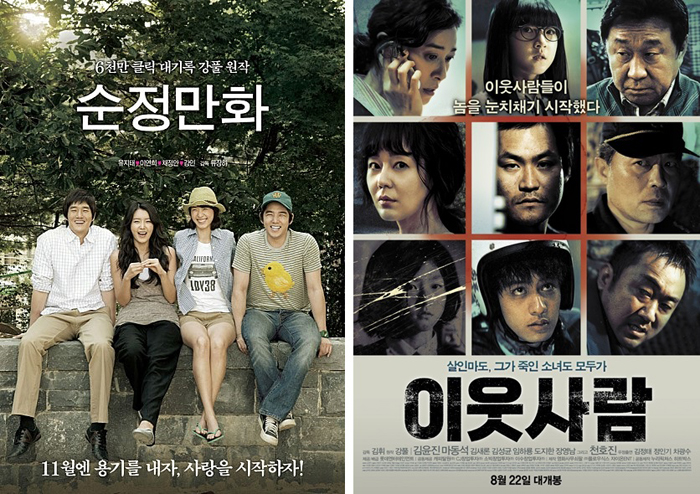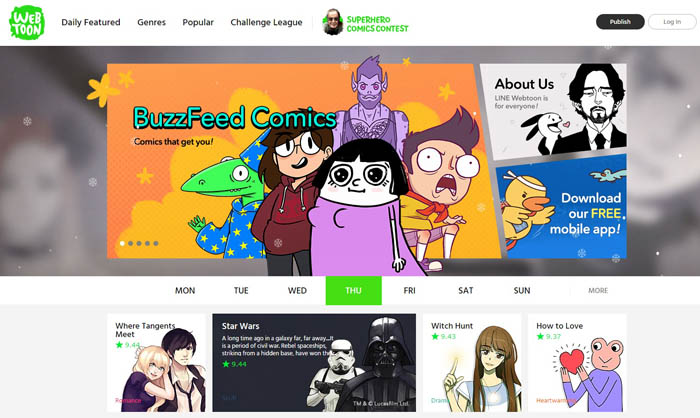The middle-aged man smiles at the younger man in his suit. The older man brought him here to a group of striking labor activists protesting their unfair dismissal in front of their prior workplace. Next to the policemen barricading the company's front door, there's a group of gangster-looking men breaking up the strike somewhat violently.
This is not the nine o'clock news. It's a scene from the television series "Songgot," or "Awl". The plot follows the struggle of the staff at a big box supermarket as they protest their employer who wants to be able to unfairly dismiss them. Worker's rights, labor unions, strikes: all of this might sound implausible for a television series. However, "Songgot" makes it real. "Songgot" weaves such plot devices into its seasonal story arc. With a vivid description of the labor scene and insights into human behavior, the series drew empathy and admiration from many viewers.

'Songgot' is the rare TV show that tells the story of workers' rights and of a labor union. It's entertaining and well-made and is based on an online comic of the same title. The producer says that what he cared most about when adapting the comic to the small screen was to exactly deliver the feeling of the original.
Most recent well-made and entertaining TV shows are based on online comic strips
Every little detail, from the characters to their conversations, is drawn faithfully from the original comics. The television series "Songgot" is a television adaptation of an online comic strip of the same title drawn by Choi Gyu Seok which has been, and still is, published every Tuesday since December 2013. Most issues get a 9.9 out of 10 in readers' comments sections. The comic strip was even honored by the chief of the Korean cartoonist association in 2014. "Songgot" has achieved both popular and critical acclaim. The producer of the TV show even said that his goal was "to deliver the original onto the small screen, as much as possible, without losing the strength of the original."
"Songgot" is not the first or only television series based on an online comic strip, called "webtoons" in Korean. In this year alone, six television series have been launched that are adaptations of online comic strips. There's the suspense comedy "The Girl Who Sees Smells," the fantasy show that features a vampire Joseon scholar "Scholar Who Walks the Night," and the romantic comedy "Hogu's Love." "Cheese in the Trap," the subject of continual TV or movie adaptation rumors, has now been made into a TV series and is waiting to be aired early next year. Given that only some 10 or so years ago the Korean comics and cartoons industry was going through hard times due to online piracy, this new success has come as quite a surprise. The surprise, of course, is pretty much thanks to online publishing and new media methods.

The online comic strip 'Cheese in the Trap' is made into a television series and is waiting to be aired next year. After a series of TV adaptations of comic strips, comic readers nowadays often play a guessing game as to which actors or actresses would be best for certain characters.
How online comics have evolved over the past ten years
From the late 1990s to the early 2000s, rapid growth of the Internet seemed to be not very helpful or beneficial to the comics industry. Illegal scans of comics and graphic novels were shared by anonymous readers and it really hit the industry hard. Though some publishers belatedly tried to sell their comic books online as e-books, many readers who had already downloaded the comics illegally didn't want to pay to read a comic strip anymore.
Meanwhile, new breeds of cartoonists began to appear. These artists posted their cartoons on their personal websites, run by themselves. Some of them soon grew in popularity. Anybody who wanted to be a cartoonist could now publish their own work. In earlier days, people who wanted to become a cartoonist had to win a contest hosted by a comic book publisher, or have years of apprenticeship under some well-known cartoonist. Kang Pool, who is one of the most famous and successful artists out there and whose work has been mostly adapted into movies, for example, started his career as an amateur cartoonist who often posted his cartoons on his website.

'Hello Schoolgirl' (2008) (left) and 'The Neighbor' (2012) (right) are both movie adaptations of comics by Kang Pool. The amateur cartoonist who used to post his cartoons on his own website is now one of the most famous figures in the industry.
As more and more cartoonists moved online, the format of online comics and graphic novels began to change. In the early years, online comics kept a book format because most of the comics uploaded online were originally drawn for books and physical binding, not for a website. Readers had to turn the page just like when reading a physical book. However, as cartoons published online became more common, an online-oriented "scroll down" format began to be considered and accepted by both artists and readers from the paper comic book era.
Comic book artists now rushed to move online. Rich Internet conglomerates, which forecasted the success of online comics, competitively lured famous artists with exclusive contracts, while offering opportunities to talented amateur artists to publish on their websites that have huge visitor numbers. Most of all, the online conglomerates offered each issue for free. A new word was invented and used to describe this new type of storytelling graphic art: webtoons.
Smart phones give a boost to online comics
Webtoons, which had been seeing steady growth, became a huge industry thanks to smartphones. The apps that offered different cartoons each day of the week on a weekly basis became standardized. The genres of webtoons diversified from comedy only to thrillers, romances, dramas and even fantasy stories. More and more webtoons with narratives and story arcs began to appear, and completely replaced the realm of paper comic books from the previous decade. Inevitably, the well-drawn comic strips with strong narratives attracted filmmakers and TV producers.
Online comics, once thought of as being only a free time killer, have now become one of the biggest inspirations for movies, TV and even for video games. The success of online publishing of comic strips even produced a derivative -- Web novels -- which is genre fiction published online on a weekly basis. Webtoons are morphing and growing with the times, and will continue to evolve.
By Chang Iou-chung
Korea.net Staff Writer
Photos: JTBC, tvN, Naver Webtoon, Line Webtoon
icchang@korea.kr
Korean webtoons can be read in other languages
Some Korean online comic strips can be read in other languages.
Line Webtoon (http://www.webtoons.com) offers about 300 comics in five different languages, including English and simplified Chinese. International readers can read, not every, but most, comic strips in their own language thanks to an army of amateur voluntary translators. Most of the comics there are free.
Korean online comic strips can be read in five different languages at Line Webtoon. The platform, updated weekly, has international services, too.
Tapastic (tapastic.com) also publishes some Korean comics in English, including "Season of Su."
Chinese readers can read Korean comic strips at Chinese websites and using Chinese applications. The portal QQ.com features some Korean comics, including the horror comic "0.0MHz" that gained great reviews from Chinese readers.
Lezhin Comics, another Korean webtoon provider, offers its comics in Japanese at its Japanese website (lezhin.com/jp).
